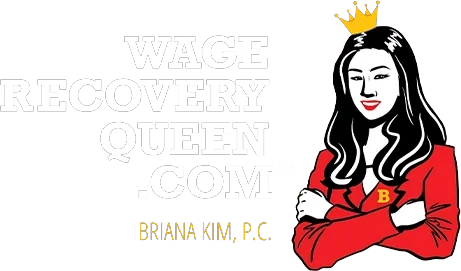How to File a Wage and Hour Claim in California: A Step-by-Step Guide


Many employees may be feeling confused, frustrated, or even intimidated by the process of recovering unpaid wages, overtime, or other benefits that are legally owed to them. California has some of the most robust employment laws in the country, so you might be wondering how to file a wage and hour claim in California.
Step 1: Understand Your Rights and Identify Potential Violations
Before you can file a claim, you need to understand what constitutes a wage and hour violation. California employment law is extensive, and some violations employers may commit include:
- Unpaid minimum wage. Employers may fail to pay the full minimum wage for your area.
- Unpaid overtime. Non-exempt employees generally must be paid 1.5 times their regular rate of pay for hours worked over eight in a workday or 40 in a workweek. They must also be paid at this rate for the first eight hours on the seventh consecutive day of work. Double time applies for hours over 12 in a workday or eight on the seventh consecutive day.
- Missed meal and rest breaks. Employees are entitled to an unpaid 30-minute meal break if they work over five hours (with some exceptions) and a 10-minute paid rest break for every four hours worked.
- Off-the-clock work. Employees cannot be required to work before or after a scheduled shift, during breaks, or while clocked out, without pay.
- Unreimbursed business expenses. Your employer must reimburse you for job-related expenses you may have.
- Improper pay deductions. You must be properly paid for all the work you have done.
- Final pay violations. Employers must pay all final wages, including accrued vacation, immediately upon termination or within 72 hours if an employee quits without notice.
- Misclassification. Employers may incorrectly classify an employee as an independent contractor or an exempt-from-overtime employee to avoid paying overtime or benefits.
With nearly 40 million people, it can be difficult for state authorities to monitor every business. All employees in California should educate themselves on these common issues so they will know if it is happening to them.
Step 2: Hire a Wage and Hour Lawyer
While you can approach this process on your own, it can be extremely challenging. California’s labor laws are incredibly intricate and constantly evolving. If you choose to handle your case by yourself, you might end up making mistakes that could risk your claim later. Some benefits of hiring an attorney include having an experienced advocate who:
- Understands the nuances in state law that can make or break your case.
- Knows precisely what evidence is needed
- How to legally obtain and organize evidence if you choose to pursue a civil claim.
- Can calculate unpaid wages, penalties, interest, and other damages that you may be entitled to.
- Has the negotiation skills to secure the maximum possible compensation for your case.
- Can navigate the DLSE hearing or court process.
- Can counteract common employer tactics, especially when the employer has a robust legal team on their side.
- Provide you with reassurance, especially with how stressful a legal dispute can be.
Step 3: Understand Your Options
There are a few common routes you and your wage and hour attorney could decide to take. These include:
- File a claim with the Division of Labor Standards Enforcement (DLSE). The DLSE provides an administrative process for employees to recover unpaid wages, penalties, and other compensation. This process is generally less formal than a civil claim.
- Bring your case before a jury or arbitrator. This is a more complex and formal process. It involves discovery, motions, and, potentially, a trial.
Your wage and hour lawyer can assess your specific situation and advise you on the right way to address your wage and hour dispute. They can consider the amount of wages owed, the complexity of your case, the likelihood of success in each forum, and the potential for additional damages or penalties.
Step 4: File Your Claim
Whether you and your legal team choose the DLSE or a civil claim, your attorney can guide you through the entire process for both options.
- For DLSE claims. You will complete and file the “Initial Report or Claim” form with the office. This form requires detailed information about your employer, the nature of the violations, and the dates they occurred. The DLSE will schedule a conference to attempt a settlement. If no settlement is reached, a formal hearing will be scheduled. This is similar to a mini-trial, where both sides present evidence and testimony. Your attorney can prepare you for this and represent you.
- For civil claims. Your attorney can draft and file a formal complaint with the California Superior Court. This will involve a discovery phase, where both sides exchange information and documents, take depositions, and, potentially, engage in mediation or arbitration. If no settlement is reached, the case may proceed to trial. Your attorney can be your advocate at every stage.
FAQs
What Is a Wage and Hour Claim?
A wage and hour claim is a formal complaint or claim. It is filed by an employee against their employer for violating state labor laws concerning pay and work time. Some of the most common violations include:
- Failure to pay minimum wage or overtime
- Denying mandatory meal and rest breaks
- Not reimbursing work-related expenses
- Illegal deductions from pay
How Long Do I Have to File a Wage and Hour Claim in California?
The filing deadline in California, or the statute of limitations, for a wage and hour violation in California will depend on the type of violation. It is three years for most claims, including unpaid overtime, minimum wage, illegal deductions, and meal/rest break violations. You have four years for claims based on a written contract or under the Unfair Competition Law. You have two years for claims based on an oral promise for wages above minimum wage.
How Long Does It Take to Resolve a Wage Claim in California?
How long it will take to resolve a wage claim in California will depend on the circumstances of your case. Simple cases can be resolved in a few months. However, if there are backlogs at the Division of Labor Standards Enforcement (DLSE) or the case is more complex, the claim may take closer to or even over a year, especially if it proceeds to a formal hearing or an appeal.
What Evidence Do I Need to File a Claim?
Many types of evidence can be used to support your wage and hour claim in California. The most common evidence used includes:
- Documents such as contracts, receipts, medical records, and accident reports,
- Visual proof
- Witness testimonies
Your attorney can review your situation to see what may be needed. Then, they can investigate your case to collect compelling evidence.
Hire a Wage and Hour Lawyer
If your employer may have violated the California wage and hour laws, the most important step you can take is to consult an experienced employment law attorney as soon as possible. Contact Briana Kim, PC, right away to learn more.



